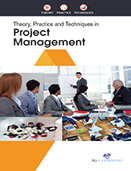Business and Management

A project is a unique, transient endeavor, undertaken to achieve planned objectives, which could be defined in terms of outputs, outcomes or benefits. A project is usually deemed to be a success if it achieves the objectives according to their acceptance criteria, within an agreed timescale and budget. It has been recognized over the last 30 years that project management is an efficient tool to handle novel or complex activities. A key factor that distinguishes project management from just ‘management’ is that it has this final deliverable and a finite timespan, unlike management which is an ongoing process. Because of this a project professional needs a wide range of skills; often technical skills, and certainly people management skills and good business awareness. Good project management is what makes the real work a success. Bad or missing project management can taint and nullify the efforts of even the most talented people. It doesn’t matter how brilliant your work is if the project as a whole is twice as expensive as intended, or a year late. This is not to say that the real work isn’t important—it is still the core of any project. No project manager can make mediocre work into an awesome end result. But fantastic work can be overlooked if the project management required to deliver the whole isn’t there.
“Theory, Practice and Techniques in Project Management” explains the principles and theories of project management and describes how and when the different project management techniques can be applied. The role of different project management techniques to implement projects successfully has been widely established in areas such as the planning and control of time, cost and quality. In spite of this the distinction between the project and project management is less than precise. This book aims to identify the overlap between the definition of the project and project management and to discuss how the confusion between the two may affect their relationship. It identifies the different individuals involved on the project and project management, together with their objectives, expectations and influences. It also discusses the implications of the situation where the project fails but the project management process is perceived to have succeeded or vice versa. The purpose of this book is to provide some understanding and guidelines on the way medium sized and large Projects in a global environment can be initiated and managed.